Understanding the Green Bottle Blue Tarantula (GBB)
The Green Bottle Blue Tarantula (GBB), scientifically known as Chromatopelma cyaneopubescens, is a captivating and popular tarantula species among arachnid enthusiasts. Their striking coloration, with vibrant blue legs and a metallic green carapace, makes them a visually stunning pet. This comprehensive care guide provides detailed information on how to properly care for a GBB, ensuring its health, happiness, and longevity. From creating the perfect enclosure to understanding their dietary needs, this guide covers everything you need to know to become a successful GBB keeper. This beautiful tarantula is not only beautiful but also relatively docile, making it a great choice for those looking to delve into the world of tarantula keeping.
Origin and Habitat of the GBB
Native to the arid regions of Northern Venezuela, the GBB thrives in a semi-arboreal environment. In their natural habitat, they often construct elaborate webs in shrubs and bushes, utilizing these webs for shelter and hunting. Understanding their origin and natural environment is crucial for replicating these conditions in captivity. Providing a similar environment will greatly increase the chances of your GBB thriving. Recreating their natural habitat will significantly enhance their well-being. They are known to be very good hunters, waiting patiently for their prey. Understanding their natural habitat and behaviour helps ensure your GBB is in its best form.
Characteristics and Appearance
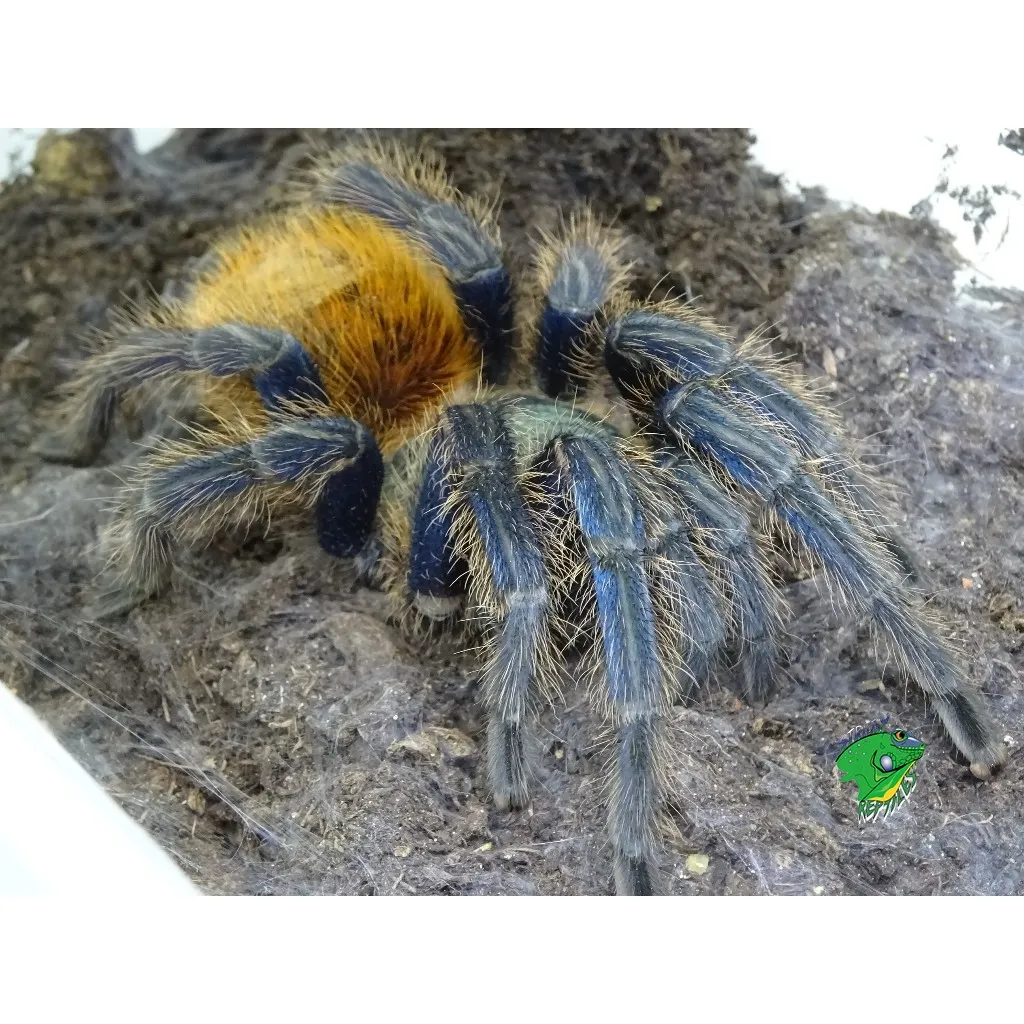
The GBB is renowned for its breathtaking appearance. Juveniles start with more subdued colors, but as they mature, they develop the iconic vibrant blue legs and a metallic green carapace. Females tend to have more vibrant colors than males, making them particularly sought after. They are medium-sized tarantulas, with a leg span that can reach up to 6 inches. Their temperament is generally considered to be docile, however, all tarantulas should be treated with respect and caution. The colors are vibrant and stunning when at their peak, making the GBB a favorite in the tarantula community. Watching them grow from juveniles into their adult colors is one of the joys of GBB ownership.
Creating the Ideal GBB Enclosure
Creating the right enclosure is paramount to the well-being of your GBB. The setup should mimic their natural habitat, providing adequate space, proper ventilation, and suitable environmental conditions. A well-designed enclosure not only keeps your tarantula safe and healthy but also allows you to observe their fascinating behaviors. The enclosure should provide a comfortable and safe environment for your tarantula to thrive. Making sure all of the conditions are correct is essential to the health of your GBB. An ideal enclosure setup is often the key to a happy and thriving GBB.
Choosing the Right Enclosure Size
The size of the enclosure should be appropriate for the tarantula’s size. For a juvenile GBB, a container approximately 8x8x8 inches is suitable. As they grow, you’ll need to upgrade the enclosure. For an adult GBB, a 12x12x12 inch or larger enclosure is recommended. Ensure the enclosure has good ventilation to prevent the buildup of humidity and mold. The enclosure should allow ample space for the tarantula to move around and create a web. Choosing an enclosure that is too small can impede their growth and well-being. Select an enclosure that is appropriate for your GBB’s current size and provide room for future growth.
Substrate and Furnishing
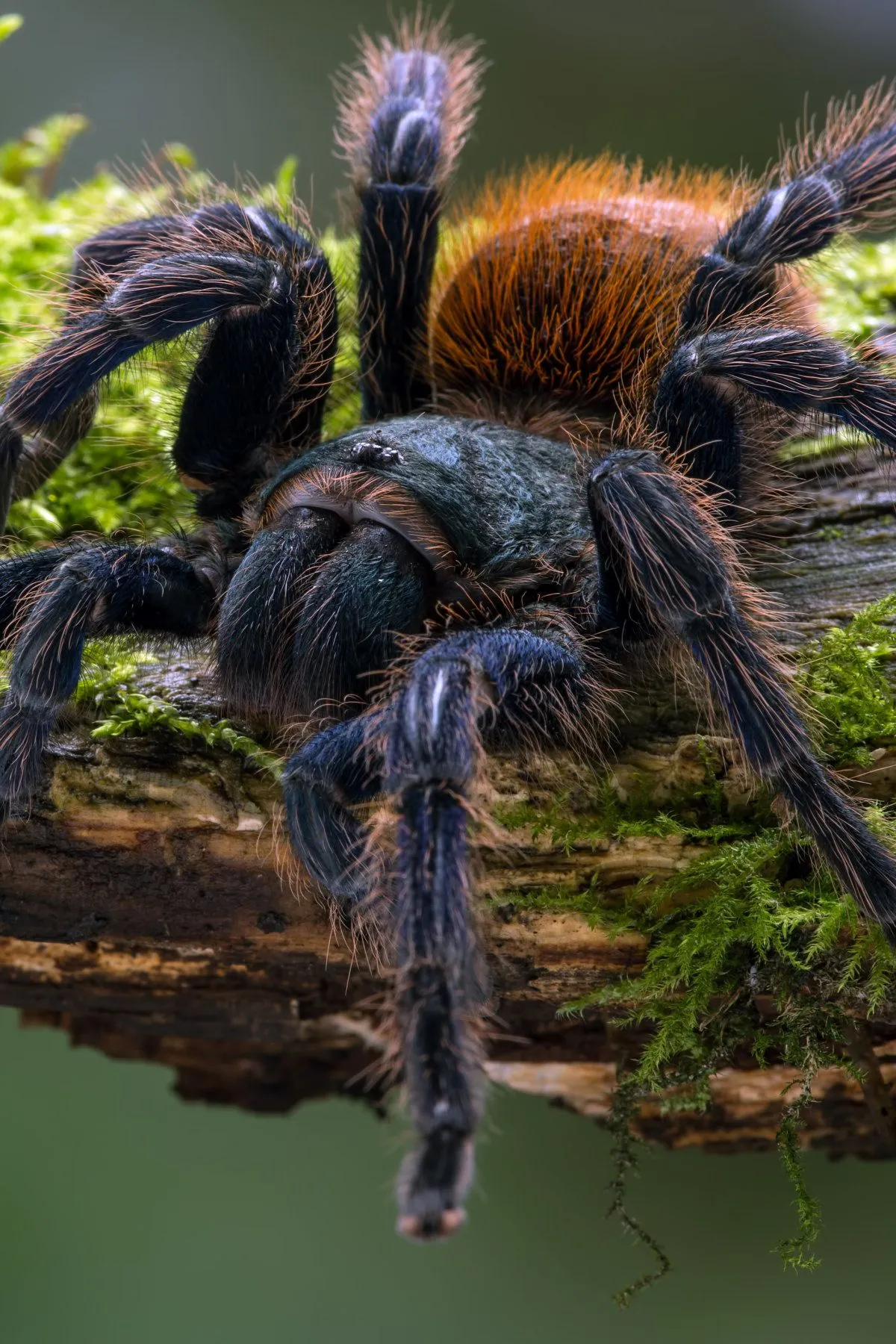
The substrate should be a mix of materials that retain moisture and allow the tarantula to burrow or create webs. A good choice is a mix of coco fiber, peat moss, and a small amount of vermiculite. This mix helps maintain humidity levels and provides a naturalistic environment. Provide some sturdy decorations like cork bark, branches, and artificial plants to give your GBB places to web and hide. These additions enrich the enclosure and provide the tarantula with a sense of security. It is important to keep the enclosure clean and provide items that allow the GBB to thrive. Proper substrate and furnishing can promote healthy molting and webbing behavior.
Temperature and Humidity Control
GBBs thrive in a temperature range of 75-85°F (24-29°C). Use a heat lamp or under-tank heater to maintain the desired temperature, especially in cooler environments. Humidity levels should be kept between 60-70%. You can monitor humidity with a hygrometer. Misting the enclosure lightly once or twice a week, or providing a water dish, can help maintain humidity. Proper temperature and humidity are critical for their health and molting process. It is important to ensure a stable environment to prevent stress and promote the well-being of your GBB. Regular monitoring and adjustments are essential to keeping your tarantula happy and healthy.
Feeding Your Green Bottle Blue Tarantula
Feeding your GBB is a straightforward process, but it’s crucial to provide the right food and in the appropriate amounts. A well-fed tarantula is a healthy tarantula. Understanding their dietary needs will help ensure your GBB thrives in captivity. Correct feeding practices are one of the most important aspects of tarantula care. Providing a balanced and consistent diet is key to their overall health and well-being. Regular feeding is essential for your tarantula’s health.
Appropriate Food Choices
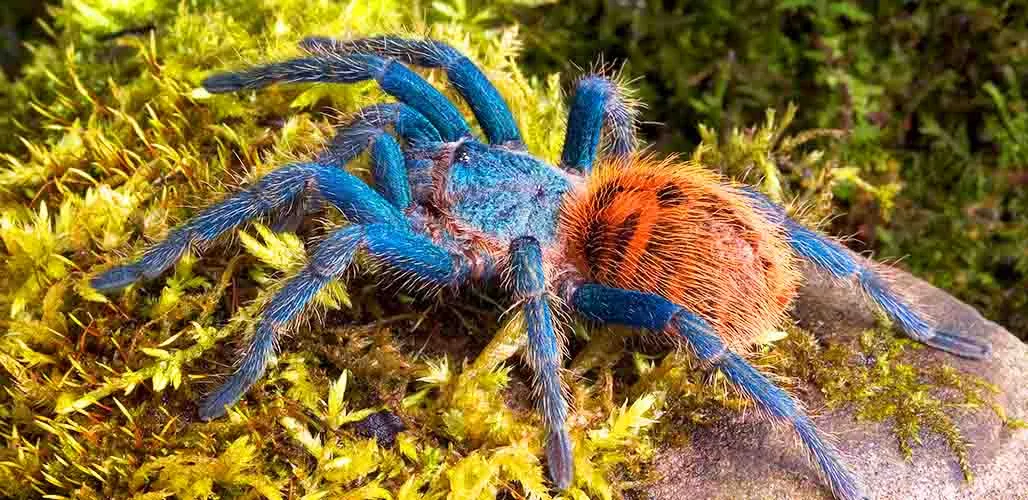
GBBs are primarily insectivores. Appropriate food choices include crickets, roaches (Dubia roaches are a popular choice), mealworms, and even occasional waxworms as a treat. The size of the food should be appropriate for the size of the tarantula; the prey should be no larger than the tarantula’s body. Avoid feeding wild-caught insects, as they may carry parasites or pesticides. Variety is beneficial, but ensure the insects are from a reliable source to avoid any contamination. The insects should be gut-loaded before feeding them to your tarantula. The prey’s nutritional value will impact the overall health of your GBB.
Feeding Frequency
Feeding frequency depends on the tarantula’s age and size. Spiderlings and juveniles should be fed 2-3 times a week. Subadults can be fed once or twice a week. Adult GBBs can be fed every 1-2 weeks, or even less frequently if they are well-fed. Observe your tarantula’s behavior; if it readily accepts food, you can continue feeding at the same frequency. If it refuses food, it may be in premolt or simply not hungry. Always remove uneaten prey within 24 hours to prevent stress on the tarantula and prevent mold growth. Regular monitoring of your tarantula’s feeding habits can help you identify potential health issues early. Adjust the feeding schedule as needed based on your tarantula’s appetite and overall health.
Watering and Hydration
Providing a clean water source is essential for your GBB’s hydration. Use a shallow water dish filled with fresh, dechlorinated water. Ensure the water dish is easily accessible and not too deep, to avoid the risk of drowning. Alternatively, you can lightly mist the enclosure once or twice a week, allowing the tarantula to drink water droplets. Always use dechlorinated water, as chlorine can be harmful to tarantulas. Regularly check the water dish and replace the water to maintain freshness and prevent the growth of bacteria. Hydration is a critical factor in their overall health and is especially important during molting. Water is essential to their health and well-being. Make sure they have access to fresh water at all times.
Essential Care and Maintenance
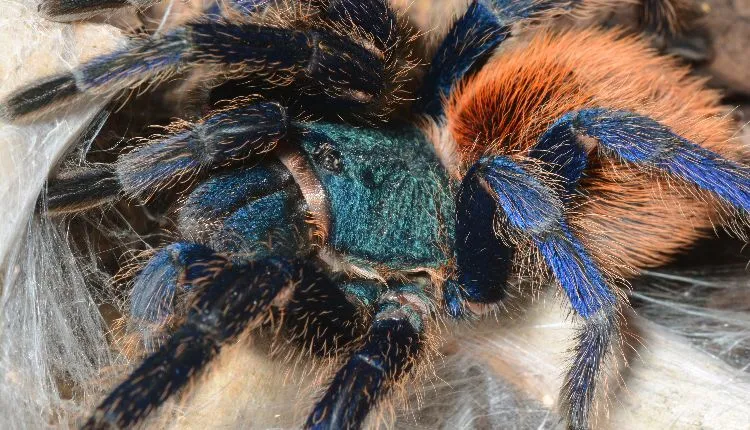
Consistent care and maintenance are crucial for the long-term health and well-being of your GBB. This includes safe handling practices, regular cleaning, and routine checks. Following these guidelines will keep your tarantula healthy and happy. Creating a routine is essential to provide them with a stress-free life. Consistency is key to ensuring a happy and healthy tarantula. Providing the right care and maintenance will keep your GBB thriving.
Handling and Safety Precautions
GBBs are generally considered to be docile, however, it’s always best to handle them with caution and respect. Handling should be kept to a minimum, as it can be stressful for the tarantula. If you must handle your GBB, do so gently and close to the ground, in case of a fall. Never force a tarantula to come out of its enclosure. Always be aware of their potential for defensive behaviors, such as flicking urticating hairs. Wash your hands thoroughly before and after handling. If you are bitten, seek medical attention, although bites are rare and not usually dangerous. Handling is not generally recommended. Handle only if necessary.
Cleaning and Enclosure Maintenance
Regular cleaning and maintenance are vital for maintaining a healthy environment. Remove any uneaten food, dead insects, and molted exoskeletons promptly. Spot-clean the enclosure as needed to remove any waste. Replace the substrate partially or completely every few months, depending on the buildup of waste and the type of substrate. Check and clean the water dish regularly. Ensure the enclosure has proper ventilation to prevent mold and fungal growth. A clean enclosure prevents the spread of disease and keeps the tarantula healthy. Regular maintenance will improve the overall living conditions for your GBB.
Health and Common Issues
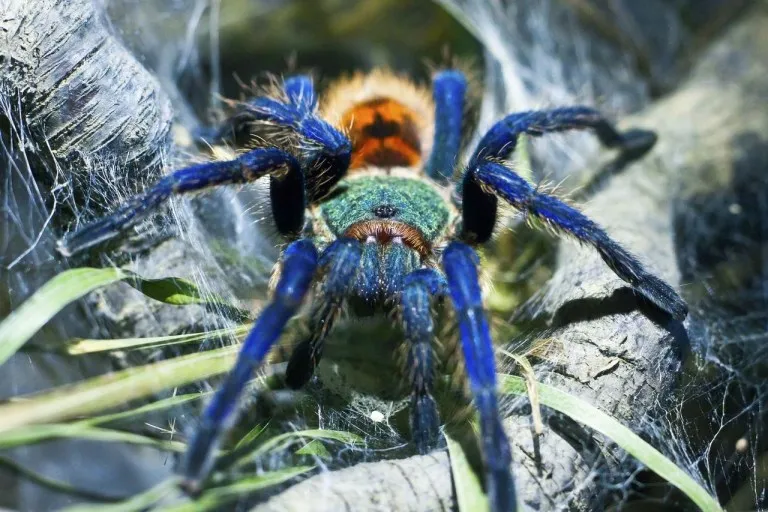
Like any pet, GBBs can experience health issues. Knowing how to identify and address these issues is critical. Regular observation and preventative care can minimize health problems. Being vigilant and recognizing signs of illness is essential. Being aware of potential health problems will help you to keep your GBB healthy and thriving. Knowing how to address these issues will help you ensure the best care for your GBB.
Recognizing Signs of Illness
Some signs of illness in a GBB include lethargy, loss of appetite, unusual postures, and excessive shaking. A tarantula that refuses food for an extended period might be ill or preparing to molt. Look for unusual discharge, discoloration, or injuries. If you notice any of these signs, isolate the tarantula and consult with an experienced tarantula keeper or a veterinarian familiar with exotic pets. Early detection and intervention are crucial for a successful recovery. Be vigilant about monitoring their behavior and appearance to identify potential health problems. Regularly check for any unusual behavior or physical changes.
Molting Process
Molting is a natural process where the tarantula sheds its exoskeleton to grow. During the premolt phase, the tarantula may appear lethargic, refuse food, and have a dark abdomen. Create a safe and stable environment for the tarantula during molting. Avoid disturbing the tarantula while it is molting, as this can be stressful and potentially harmful. After molting, the tarantula’s new exoskeleton will be soft; it should be given several days to harden before feeding. Ensure the enclosure is at the proper humidity level to assist with the molting process. Molting is a critical part of the GBB’s life cycle, and providing a stress-free environment during this time is essential for their health and well-being. After molting, it may take some time for their new colors to fully develop.
Breeding and Reproduction
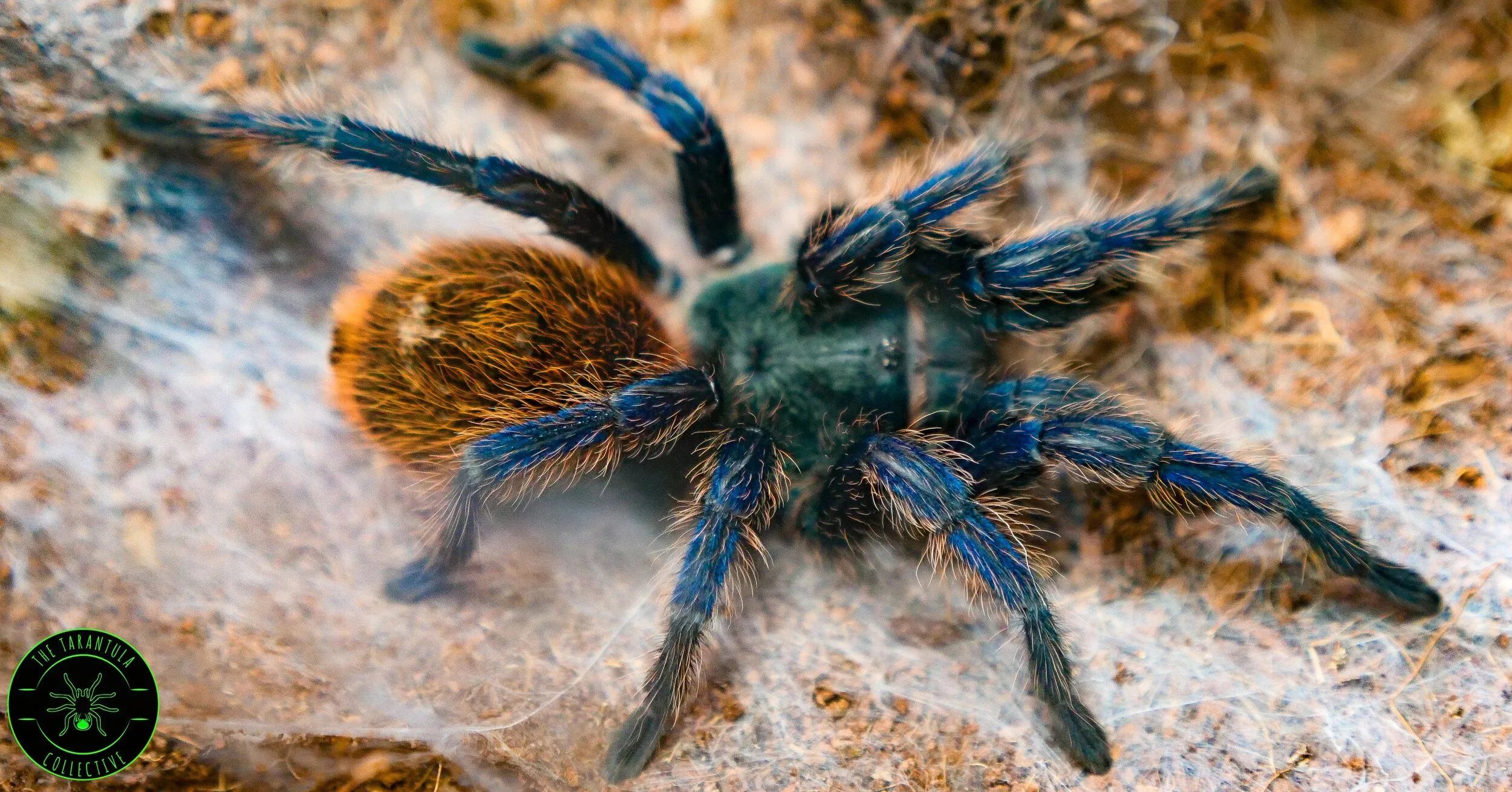
Breeding GBBs is a more advanced aspect of tarantula keeping, and it requires considerable knowledge and experience. Successful breeding requires careful planning, proper environmental conditions, and a good understanding of tarantula behavior. It is important to know about the specific needs of the species you are breeding. The breeding process can be challenging. The process requires the knowledge of experienced keepers. This guide will not go into details on breeding. If you are interested in breeding GBBs, you should research and consult with experienced breeders.
